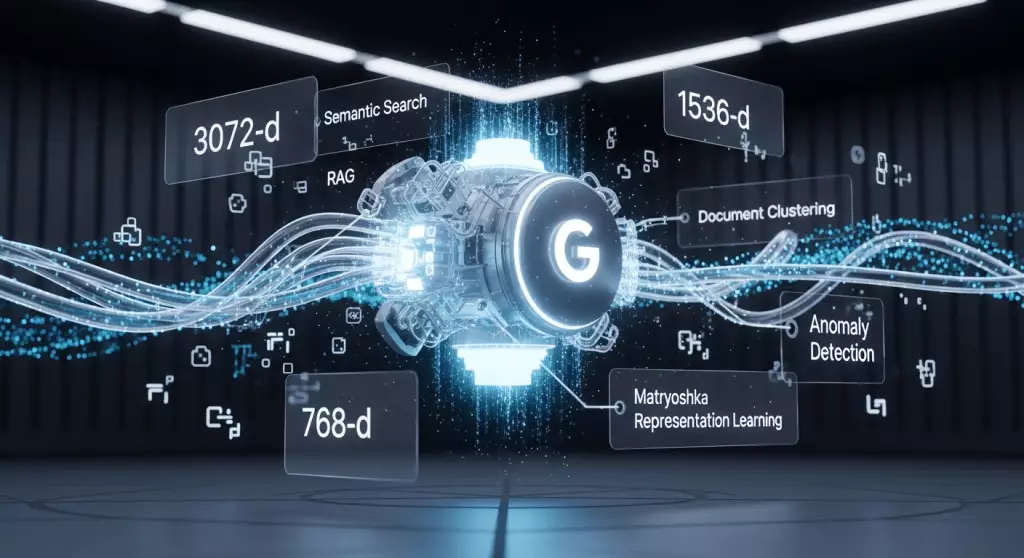Google’s recent launch of its Gemini Embedding model marks a significant milestone in the evolution of artificial intelligence. The model’s ascent to the top of the Massive Text Embedding Benchmark (MTEB) underscores its technical prowess, but this achievement invites a deeper conversation about the broader AI landscape. The deployment of Gemini-embedding-001 across Google’s infrastructure signals a strategic move to dominate multi-modal and textual understanding, promising transformative applications. However, the intense competition from open-source models and other industry players raises critical questions about the true long-term impact of Google’s proprietary approach. While standing at the forefront today, the AI community must remain vigilant about over-reliance on such closed systems and consider whether the future truly belongs to open collaboration or proprietary dominance.
Strategic Implications for Businesses and Developers
The integration of Gemini into Google’s Vertex AI and Gemini API essentially simplifies access to advanced embedding technology, democratizing sophisticated AI capabilities for a broad audience. For enterprises, this means streamlined deployment of semantic search, document classification, and retrieval-augmented generation (RAG) applications. The model’s versatility—trainable to handle over 100 languages and adaptable across domains like finance, legal, and engineering—positions it as an attractive off-the-shelf solution.
Yet, the allure of instant usability should be weighed against strategic considerations. Relying exclusively on a closed, API-dependent model means ceding control of data and infrastructure. Costs—at $0.15 per million tokens—may seem manageable initially, but scaling can become expensive, especially for large enterprise workloads. Companies must evaluate whether the convenience of Google’s managed service outweighs the flexibility and security of deploying open-source alternatives that can be customized and self-hosted. The choice reflects a fundamental tension in AI adoption: convenience versus control.
Open-Source Alternatives and the Future of Flexibility
While Google’s Gemini currently leads in benchmarks, the AI landscape is inherently competitive and dynamic. Open-source models like Alibaba’s Qwen3-Embedding and Qodo’s Qodo-Embed-1-1.5B offer compelling alternatives, particularly for organizations with stringent data sovereignty requirements. These models are licensable under permissive licenses, enabling companies to deploy them within private infrastructure or on-premise setups—a critical advantage for regulated sectors.
The significance of open-source does not merely lie in cost savings or control but in fostering innovation. Open models are more transparent, adaptable, and capable of rapid iteration tailored to specific needs. For instance, a developer working within a niche domain or with highly sensitive data might find Google’s API-centric approach limiting. Moreover, the open-source community actively develops domain-specific embedder models, like Qodo’s specialized tool for code, potentially outperforming generalist solutions in particular use cases.
The Balance Between Proprietary and Open Models
Google’s Gemini embodies a high watermark for general-purpose embeddings, but it also exemplifies a strategic shift towards proprietary dominance in AI. Their Matryoshka Representation Learning (MRL) technique, which allows flexible embedding sizes from 768 to 3072 dimensions, underscores the importance placed on versatility. This makes Gemini a “plug-and-play” tool for many enterprises, removing the often-complex requirement for fine-tuning. Yet, this convenience comes with trade-offs—a closed ecosystem that limits the ability to customize, audit, or improve the model beyond what Google provides.
On the other side, open-source models like Qwen3 offer transparency, customizability, and cost-effective scalability. They catalyze a paradigm where organizations don’t just consume AI but actively shape it—improving upon base models, adapting to niche tasks, and building resilient, privacy-conscious systems. As the AI community continues to prioritize openness, the question arises: will proprietary giants like Google maintain their dominance, or will open-source models isolate themselves as viable counterparts—sometimes even superior ones—on specific tasks?
Beyond Text: The Multimodal Revolution and Ethical Dimensions
Embeddings are no longer confined to text; their applicability spans images, videos, and audio, heralding a multimodal era. Google’s Gemini, with its sophisticated training techniques, aims to unify these modalities, enabling seamless cross-representation of diverse data types. This potential is vast for sectors like e-commerce, where a single embedding can encapsulate product images and descriptions, or in healthcare, for integrating scans with textual reports.
Nevertheless, with great power comes great responsibility. As models become more complex and integrated into decision-making workflows, ethical considerations—bias, transparency, and privacy—must escalate in importance. Proprietary models restrict scrutiny, making it difficult to assess underlying biases or data handling practices. Open-source alternatives, while more transparent, require active oversight by the community to prevent misuse. The future of embeddings will not only depend on their technical capacity but also on how consciously and ethically we deploy these powerful tools.
The advent of Google’s Gemini Embedding marks an impressive achievement but also opens a Pandora’s box of strategic, ethical, and technical questions. While the lure of a high-performing, out-of-the-box solution is undeniable, it risks cementing a duopoly dominated by closed ecosystems if enterprises don’t diversify their options. The ongoing rivalry between proprietary models like Gemini and open-source efforts underscores the importance of maintaining a balanced ecosystem—where innovation, control, and accessibility coexist.
In this rapidly evolving landscape, organizations must critically assess their priorities: Do they lean towards the ease and refinement of proprietary systems, or do they champion the flexibility, transparency, and community-driven innovation of open models? The answer will shape not just their technological capabilities, but also the ethical and strategic fabric of AI development for years to come.


Leave a Reply